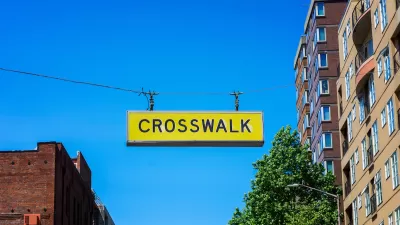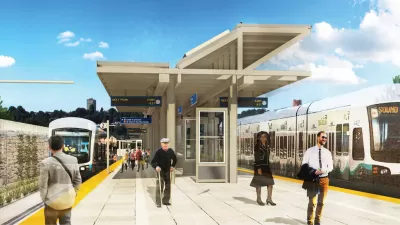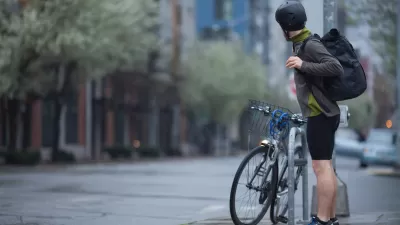Minneapolis and Seattle bucked national trends by increasing active transportation and use of public transit in recent years.

As cities across the U.S. struggle to sustain transit ridership, Minneapolis and Seattle have distinguished themselves with high rates of non-car commuting, according to a recent report from the Institute for Transportation and Development Policy.
Streetsblog's Angie Schmitt reports that despite gaining 30,000 residents between 2007 and 2016, Minneapolis reduced vehicle miles traveled by 2 percent over that time. In Seattle, average daily traffic fell 5 percent between 2006 and 2017.
"Believe it or not, this is a rare feat," Schmitt writes, noting that low gas prices, population growth, and the rise of ride-hailing services have made reducing driving "one of the hardest codes [to crack] in city planning."
The strategies that led to these results won't be surprising to many transportation planners. They fell along three major lines:
- Investment in public transit, both bus and rail. Both Seattle and Minneapolis are in the midst of building or expanding their BRT networks, and both have opened new rail lines in recent years. Seattle voters in particular have shown willingness to fund transportation.
- Investment in bike infrastructure. Both cities are "famously bike friendly," with Seattle being named Bicycling Magazine's Top Biking City in America in 2018.
- Urban infill and dense, walkable development. Seattle recently launched a program to build affordable apartments on public land adjacent to light rail, while Minneapolis saw nearly $1 billion in downtown development in 2017 and eliminated parking requirements in 2018.
FULL STORY: How Two Cities Actually Reduced Driving

Alabama: Trump Terminates Settlements for Black Communities Harmed By Raw Sewage
Trump deemed the landmark civil rights agreement “illegal DEI and environmental justice policy.”

Planetizen Federal Action Tracker
A weekly monitor of how Trump’s orders and actions are impacting planners and planning in America.

The 120 Year Old Tiny Home Villages That Sheltered San Francisco’s Earthquake Refugees
More than a century ago, San Francisco mobilized to house thousands of residents displaced by the 1906 earthquake. Could their strategy offer a model for the present?

In Both Crashes and Crime, Public Transportation is Far Safer than Driving
Contrary to popular assumptions, public transportation has far lower crash and crime rates than automobile travel. For safer communities, improve and encourage transit travel.

Report: Zoning Reforms Should Complement Nashville’s Ambitious Transit Plan
Without reform, restrictive zoning codes will limit the impact of the city’s planned transit expansion and could exclude some of the residents who depend on transit the most.

Judge Orders Release of Frozen IRA, IIJA Funding
The decision is a victory for environmental groups who charged that freezing funds for critical infrastructure and disaster response programs caused “real and irreparable harm” to communities.
Urban Design for Planners 1: Software Tools
This six-course series explores essential urban design concepts using open source software and equips planners with the tools they need to participate fully in the urban design process.
Planning for Universal Design
Learn the tools for implementing Universal Design in planning regulations.
Clanton & Associates, Inc.
Jessamine County Fiscal Court
Institute for Housing and Urban Development Studies (IHS)
City of Grandview
Harvard GSD Executive Education
Toledo-Lucas County Plan Commissions
Salt Lake City
NYU Wagner Graduate School of Public Service





























